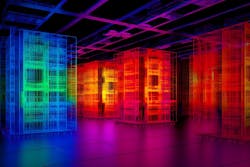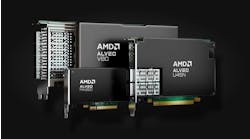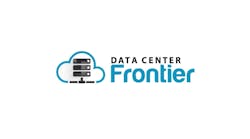As rack density increases and demand for AI-based cloud services skyrockets, efficient and reliable cooling solutions will drive data center modernization and design. In addition, sustainability and environmental pressures are making water and power efficiencies essential.
Data centers have traditionally used air-cooled systems to blow through racks to remove heat. Originating from a centralized computer room, air conditioning units use evaporative, expansion or chilled water loop to cool equipment from the outside. But when these traditional systems are not enough to eliminate hot spots, what’s next?
Quick Fixes
The most cost and time-efficient solutions are usually the simplest. An audit of legacy systems can determine how to maintain current equipment with the least impact to uptime, reliability and budget considerations. A few simple fixes could include:
- Redistribute equipment, so racks are not as dense and allow more circulation.
- Upgrade physical or IT infrastructure.
- Upgrade air conditioning equipment to increase heat rejection capacity.
- Add heat exchangers to racks that can flow cooling water at rack level for close-coupled cooling.
An assessment of the data center uncovers opportunities for operational excellence by measuring and testing existing infrastructure. The assessment first identifies any potential gaps keeping you from reaching your desired state and then outlines the solutions. By reviewing a data center’s current capability data center operators can make informed decisions to build a roadmap for infrastructure improvements.
CFD Modeling
For data centers with cooling issues, Computational Fluid Dynamics (CFD) modeling analyzes air flow and provides extensive data to pinpoint specific hotspot locations and inefficiencies in cooling systems.
The ability to perform, leverage and apply CFD modeling and analysis brings multiple benefits to the data center. Using the thermodynamic data collected during the CFD modeling process allows operators to run real-time change scenarios. By accurately simulating fluid flow, CFD allows facilities to identify current issues, guide potential changes, validate the changes that have improved operation, and solve future problems before they occur. CFD provides a host of benefits and drives sustainability and resilience through informed design. These “what ifs” provide an endless picture of the best results with the least impact to operations. Specific examples of benefits from CFD:
- Drives design excellence and evaluating operational alternatives to minimize operations and maintenance costs and risks.
- Allows for design assessment early in the process, driving efficiency and effectiveness in design development.
- Provides “what-if” analysis including power restart scenarios.
- Identifies hot spots to allow for design and flow alterations.
- Allows for the assessment of manufacturers’ claims on equipment performance.
Immersion and Liquid Cooling
One of the most effective and efficient cooling methods used in data centers is immersion cooling. Immersion cooling involves submerging the computer systems in liquid that absorbs heat. The liquid used is usually a dielectric fluid, which is non-conductive and does not damage the electronic components. Liquid cooling is another method used to eliminate hot spots. This method involves circulating a liquid through the computer systems, similar to how water is circulated in a car engine. The liquid absorbs heat from the components and transfers it to a heat exchanger, which dissipates the heat into the surrounding environment.
There are several advantages of immersion and liquid cooling for data centers:
- Improved cooling efficiency: They can cool high-density computing systems more effectively and operate at higher temperatures than air systems. This allows the cooling system to operate closer to the ambient air temperature, limiting and sometimes eliminating the need for mechanical cooling.
- Increased reliability: Immersion and liquid cooling can help improve the reliability and longevity of data center equipment. This can reduce downtime and prevent the need for costly repairs or replacements.
- Reduced energy consumption: Immersion and liquid cooling can reduce the energy consumption of data centers by up to 50%. They require less energy to cool the same amount of computing power as air cooling methods.
- Reduced building footprint: Liquid cooling systems require only about half the space of air-cooled systems, allowing for much more IT equipment space within the same building footprint.
- Reduced noise levels: Immersion and liquid cooling are quieter than air cooling methods, which can reduce noise pollution within the data center.
- Scalability: Immersion and liquid cooling are highly scalable and can accommodate the increasing demands for computing power. They can be used to cool High-Performance Computing (HPC) systems, which are becoming more prevalent.
As the demand for AI-based cloud services continues to rise, efficient and reliable cooling solutions are becoming increasingly essential for data center modernization and design. Hot spots can have a critical impact on data center reliability and equipment life. Data center operators must continually assess their existing infrastructure and make informed decisions to build a roadmap for infrastructure improvements and future IT investments. With the ever-growing importance of data centers in our digital world, it is critical to ensure cooling solutions are efficient, reliable, and sustainable.
Phil Fischer has over 25 years of experience in the distributed generation and data center industry and is the Business Development Director for the Data Center and Mission Critical segment of Black & Veatch. Black & Veatch is a global engineering, procurement, consulting and construction company with a more than 100-year track record of innovation in sustainable infrastructure. Learn more about Black & Veatch’s comprehensive data center expertise here.






